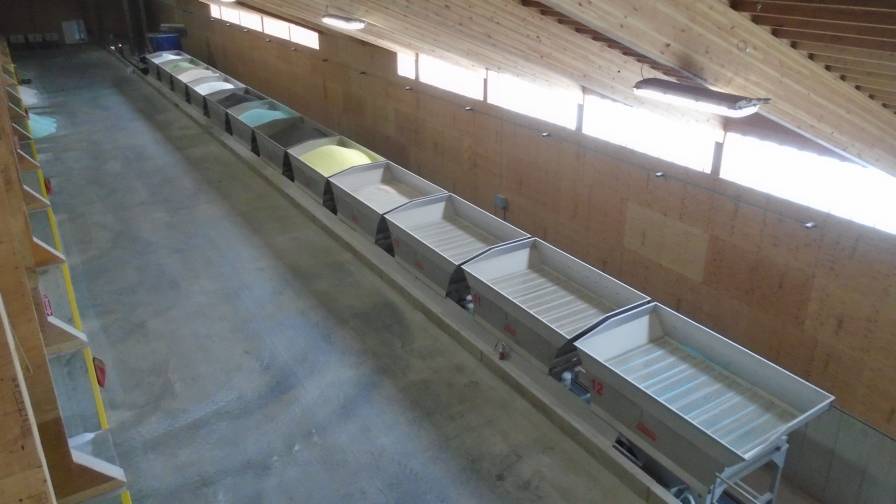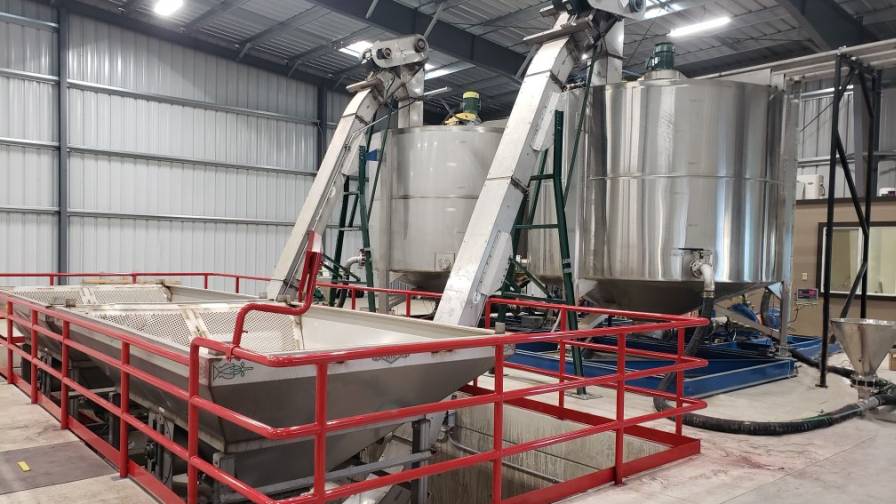Fertilizer Mixing and Blending: Speed, Flexibility Highlight Key Attributes of Today’s Systems

Ag retailers are looking for fertilizer systems that offer speed and accuracy improvements, as well as the ability to create customized blends. Photo courtesy: Ranco Fertiservice
There’s classic line from the 1986 Tom Cruise movie, “Top Gun” where he says, “I feel the need … the need for speed,” as he turns to high-five his wing man. Mixing and blending systems, while maybe not as “sexy” as a fighter jet, certainly have increased their sophistication and speed.
In addition to working faster, they must also integrate with a host of ag tools.
“Two key changes come to mind: First, the easiest and most obvious change is speed. As growers have gotten larger, they need to get their fertilizer down rapidly, and the timing of the application puts pressure on ag retailers to deliver ASAP,” explains Nate Wittmaack, President/COO, Ranco Fertiservice. “Additionally, there tends to be fewer and larger dry fertilizer facilities that need to be capable of producing more tons of fertilizer faster. For this reason, Ranco blend systems have increased from the half-ton per minute that was considered fast in the 1970s. Today, systems capable of five or more tons per minute is not out of the question.”
“The next change is the inclusion of more and more ingredients, both macro ingredients and micros/liquids,” he continues. “More ingredients result in larger and more flexible systems than were originally provided. In many dry fertilizer blending systems, the additional ingredients result in additional time required. Thankfully, the Ranco system is capable of handling large numbers of individual ingredients without slowing the system down. And the system can be easily expanded to accommodate additional materials.”
Todd Scobie, MEI Sales and Marketing Manager, Murray Equipment Inc., adds integration — the ability to mesh with back-office operations and other tools — to the list of advantages of most up-to-date mixing and blending systems.
“Today, mixing and blending systems are about the synergy between the equipment, control hardware, and plant software, which integrates with the inventory and billing software,” Scobie explains. “At Murray Equipment, our in-house engineering and software teams work together with our customers to figure out how to achieve their goals. For some customers, it’s about speed and accuracy improvements. For others, it’s about creating proprietary blends. It’s important not only that the equipment and software work in tandem, but also that they’re flexible enough to manage future growth and changes without a complete system replacement. Each dry mixing and liquid blending system we create for our customers is designed around their unique competitive advantages as well as their growth plans.”
Apparently that strategy has played out.
“MEI and ICS (Integrated Control Systems) continue to see growth annually,” says Scobie. “There’s a lot of market momentum behind intelligent mixing and blending systems that stand the test of time.”
Ranco started seeing an uptick in sales early last year.
“Starting in early 2021, we saw a significant change in activity,” Wittmaack says. “We expect 2022 to continue to be quite busy in the dry fertilizer blending industry.”
According to Scobie: “The desire for increased speed, improved accuracy, safety, and accurate inventory management are why customers approach Murray Equipment. MEI customers want to improve their control over the blending systems to better serve their customers.”
“The ag retailers are really the ones that are going to make most of those purchasing/upgrading decisions, but the growers are really the driver behind those decisions,” Wittmaack says. “With commodity prices trending the right direction for growers, there is likely to be more fertilizer going down than previous years, so ag retailers are left to plan on how to handle that increased demand.”
Trends
Popular innovations are rarely introduced without insight from customers. To ensure success (or at least to give it a better chance), manufacturers talk with customers to learn what they need and want from their mixing and blending systems.
“New locations, site and software upgrades, and customer service improvements such as speed and proprietary blends continue to drive purchasing decisions,” Scobie says. For retailers, new mixing and blending systems deliver value to their customers.
“Our customers (typically ag retailers) are looking to become more efficient in delivering dry fertilizer to their grower customers,” Wittmaack says. “Any decisions to upgrade/build new are focused on the growers’ needs. The other primary trend is ag retailers are actively looking to expand their customer base and win business from competitors. New infrastructure helps accomplish this and allows them to effectively service more growers.”
Opportunities
For much of the ag world, the consolidation that’s taken place over the past several years limits sales opportunities. That’s not necessarily the case for mixing and blending systems.
“We continue to see mergers and acquisitions occur in the ag retail space,” says Wittmaack. “These transactions tend to lead to thorough assessment of the infrastructure associated with individual locations, and sometimes can lead to greenfield projects as well.”
And of course, the sale doesn’t end once the system has been purchased.
“The ROI both in terms of dollars and customer satisfaction of upgrading an existing facility is clear. Training and re-training can be done online,” Scobie says. “Thanks to the software component, we can add new features over the internet. MEI continues to develop new ways to achieve speed, accuracy, and customer satisfaction and incorporate them in our mixing and blending systems.”
Challenges
There’s been plenty of good news for mixing and blending system manufacturers despite the challenges seen in many areas of the ag industry. And mixing and blending system manufacturers have not endured those issues entirely unscathed.
“While we haven’t totally escaped supply chain issues, thanks to strong vendor relationships and on-hand inventory, MEI has been able to continue to serve its customers,” Scobie says.
Ranco shares similar concerns.
“We have had some challenges with individual items here and there, but thankfully have been able to “weather the storm” so far for the most part,” Wittmaack says. “We continue to look out further than ever to ensure that we are able to deliver as expected.”
In addition, these systems are large and complex. Yet they need to be able to adapt to customers’ rapidly changing needs.
“The ability to handle complex and large product number blends rapidly can be a challenge depending on the type of blend system that is in place,” Wittmaack says. “The Ranco DW blend system excels in the efficient production of complex blends including liquid and dry micro/additive application. At the same time, systems need to be able to rapidly discharge straight product as necessary to support VRT spreading. Recent designs can accomplish these goals effectively.”
What’s New
Murray Equipment Inc.: “While MEI is known for its expertise in liquid mixing and blending, we are also managing dry blending as well,” Scobie says. “Our ICS controls and ControlPro software will control any dry plant. For facilities that are providing both liquid and dry mixes, the power and simplicity of a single control provider offer a multitude of benefits. This includes lower training costs, fewer integration points, and fewer data errors.”
Ranco: “The Ranco MeshDCS controls for our Declining Weigh (DW) blend systems are a step forward in terms of flexibility for future needs, and for the limited field wiring required to implement a system,” Wittmaack says. “Additionally, integrations from customers’ business systems and ticket software to the blend system continue to be in high demand. The inclusion of dry and liquid micros and additives continue to be a big deal as the industry moves forward.”
“The implementation of MeshDCS control reduces the quantity and complexity of the field wiring required to install a high-speed blend system,” Wittmaack continues. “Couple this with the flexibility of different blender bin size s and high speed drag chain meter units, we can configure a system to work now, and in the future.”







